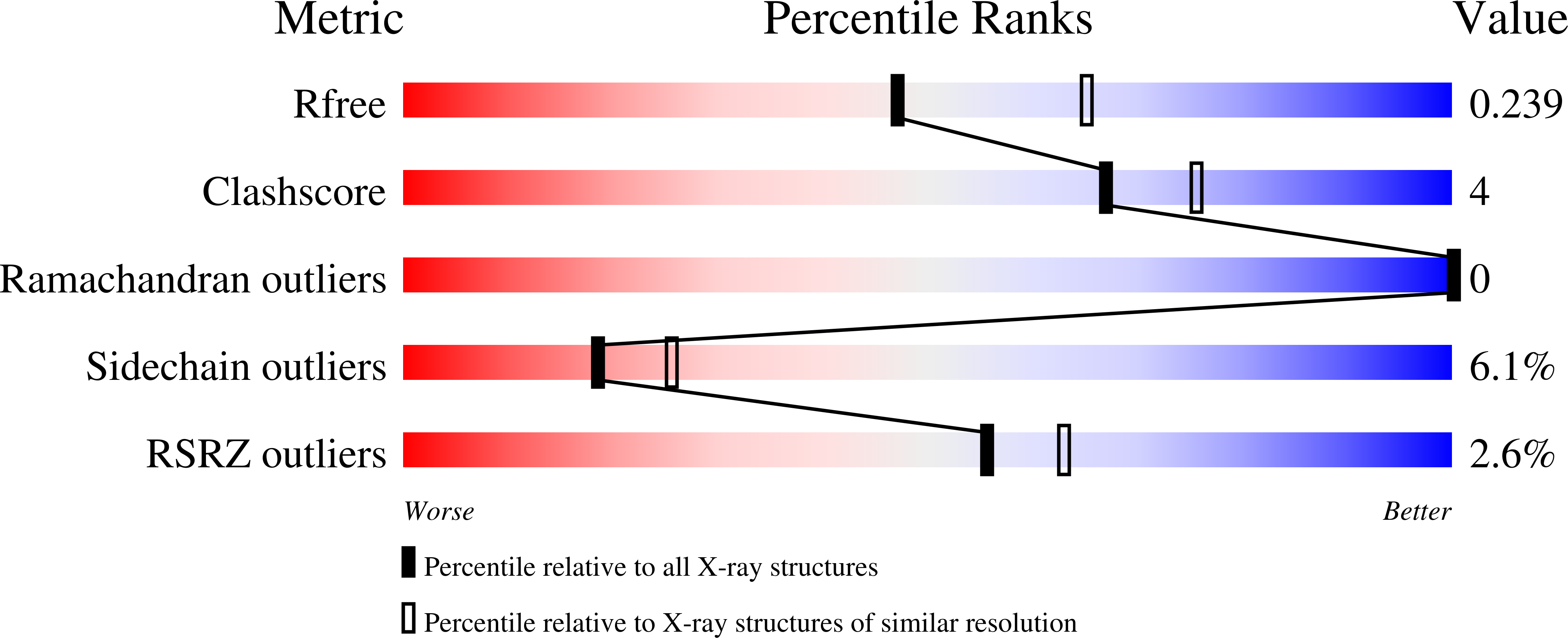Structural basis for the counter-transport mechanism of a H+/Ca2+ exchanger.
Nishizawa, T., Kita, S., Maturana, A.D., Furuya, N., Hirata, K., Kasuya, G., Ogasawara, S., Dohmae, N., Iwamoto, T., Ishitani, R., Nureki, O.(2013) Science 341: 168-172
- PubMed: 23704374
- DOI: https://doi.org/10.1126/science.1239002
- Primary Citation of Related Structures:
4KPP - PubMed Abstract:
Ca(2+)/cation antiporters catalyze the exchange of Ca(2+) with various cations across biological membranes to regulate cytosolic calcium levels. The recently reported structure of a prokaryotic Na(+)/Ca(2+) exchanger (NCX_Mj) revealed its overall architecture in an outward-facing state. Here, we report the crystal structure of a H(+)/Ca(2+) exchanger from Archaeoglobus fulgidus (CAX_Af) in the two representatives of the inward-facing conformation at 2.3 Å resolution. The structures suggested Ca(2+) or H(+) binds to the cation-binding site mutually exclusively. Structural comparison of CAX_Af with NCX_Mj revealed that the first and sixth transmembrane helices alternately create hydrophilic cavities on the intra- and extracellular sides. The structures and functional analyses provide insight into the mechanism of how the inward- to outward-facing state transition is triggered by the Ca(2+) and H(+) binding.
Organizational Affiliation:
Department of Biophysics and Biochemistry, Graduate School of Science, University of Tokyo, 2-11-16 Yayoi, Bunkyo-ku, Tokyo 113-0032, Japan.



















